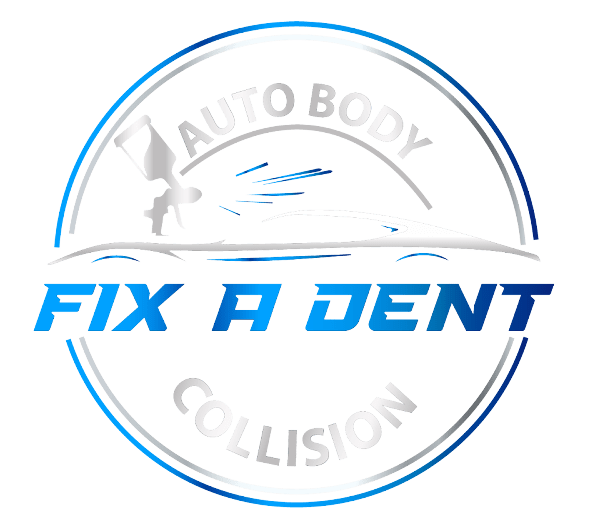Ignoring collision damage isn’t just about looks. Even small dents and scratches can hide deeper structural issues. A properly repaired vehicle ensures safety, preserves resale value, and gives you peace of mind when driving.
Common Causes of Vehicle Collisions
Distracted Driving
From texting to fiddling with the radio, distractions are the top cause of collisions today. One split second can change everything.
Weather Conditions
Rain, snow, and fog can turn roads into danger zones. Reduced visibility and slippery surfaces often lead to accidents.
Mechanical Failures
Brake failures, tire blowouts, or engine issues can cause accidents without warning. Regular maintenance helps reduce these risks.
Types of Collision Damage
Cosmetic Damage
Scratches, dents, and broken lights fall into this category. While they don’t always affect driving, they ruin your car’s appearance.
Structural Damage
This is serious. A bent frame or compromised crumple zones impact your car’s safety and drivability.
Mechanical Damage
Collisions often damage hidden parts like the radiator, suspension, or transmission. Ignoring these can lead to bigger problems down the road.
The Collision Repair Process Explained
Step 1: Initial Inspection
A technician inspects visible damage and creates an initial report.
Step 2: Insurance Estimates
Shops work with your insurance company to provide repair cost estimates.
Step 3: Disassembly and Hidden Damage Check
Taking apart panels reveals hidden structural or mechanical issues.
Step 4: Structural and Mechanical Repairs
Using specialized tools, technicians straighten frames, fix engines, and replace damaged parts.
Step 5: Bodywork and Painting
Dent repairs, sanding, priming, and applying paint bring your car back to life.
Step 6: Reassembly and Quality Control
Everything is put back together, and the vehicle goes through strict checks before returning to you.
The Role of Technology in Collision Repair
Computerized Diagnostics
Modern vehicles have sensors everywhere. Diagnostics ensure all systems work correctly after repairs.
Frame Straightening Machines
These machines measure and restore your car’s frame to factory specifications.
Paint-Matching Technology
No more mismatched panels. Advanced tools guarantee the new paint blends seamlessly.
Choosing the Right Collision Repair Shop
Certifications and Training
Look for shops with I-CAR or ASE certifications. These prove technicians are trained to industry standards.
Customer Reviews
A shop’s reputation says a lot. Online reviews and word-of-mouth can guide your choice.
Warranty on Work
A good repair shop stands behind its work with warranties.
DIY vs Professional Collision Repair
DIY works for tiny scratches, but structural or mechanical damage? Leave it to the pros. They have the tools, training, and technology you can’t match at home.
How Long Does Collision Repair Take?
It depends on the severity. Minor dents may take a day or two, while major structural repairs can stretch to weeks. Insurance approval time can also affect the timeline.
Collision Repair Costs and What Affects Them
Costs vary based on:
- Severity of damage
- Parts required (OEM vs aftermarket)
- Labor costs
- Paint and refinishing work
Minor repairs might cost a few hundred dollars, while major repairs can run into the thousands.
Working with Insurance for Collision Repairs
Your insurance company plays a big role. Always understand your policy, deductible, and whether your plan covers OEM parts or aftermarket replacements.
Preventing Future Collisions
You can’t control everything, but safe driving habits help:
- Avoid distractions
- Keep a safe distance
- Drive carefully in bad weather
- Maintain your vehicle regularly
Benefits of Timely Collision Repair
- Ensures your car is safe to drive
- Maintains vehicle value
- Prevents rust and further damage
- Restores appearance and confidence
Signs You Need Professional Collision Repair
- Misaligned doors or panels
- Strange noises while driving
- Uneven tire wear
- Steering feels off
- Dashboard warning lights
Conclusion
Collision repair isn’t just about fixing dents—it’s about restoring safety, function, and confidence. Whether you’re dealing with a small fender bender or a major crash, choosing the right repair shop makes all the difference. Don’t delay repairs; your safety is worth it.
FAQs
1. How do I know if my car has hidden collision damage?
If your car feels off when driving, makes unusual noises, or has misaligned panels, it may have hidden damage.
2. Is OEM always better than aftermarket parts?
OEM parts match factory standards, but aftermarket can be cost-effective. Your choice may depend on budget and insurance coverage.
3. Will collision repair affect my car’s resale value?
Not if done correctly. Quality repairs can restore your car to near-original condition.
4. Can I choose my own collision repair shop, or must I use the insurance company’s choice?
You always have the right to choose your own repair shop, even if insurance recommends one.
5. What should I do immediately after a collision?
Ensure safety first, call the authorities, document damage, and contact your insurance provider before arranging repairs.
